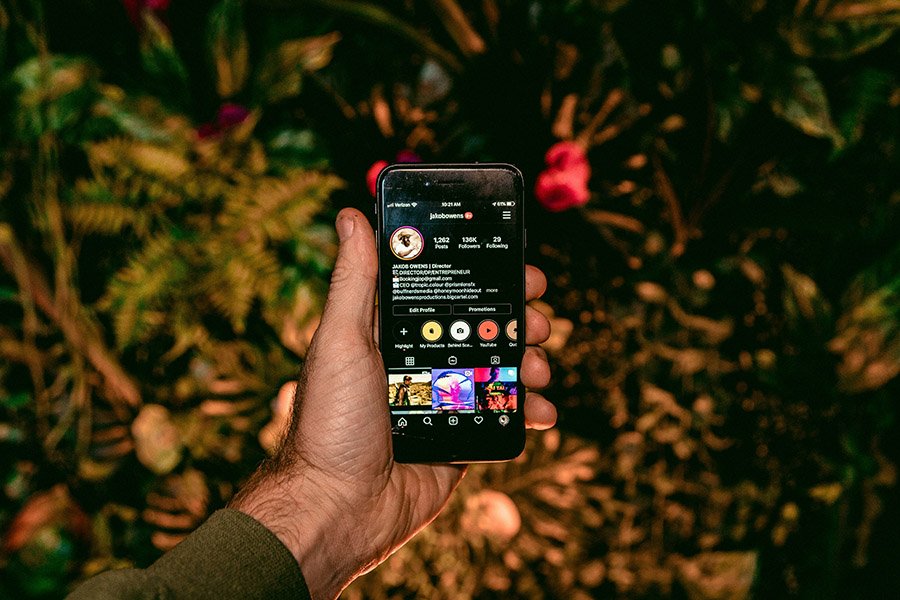Influencer marketing has become one of the most impactful strategies in digital marketing today. From Instagram to YouTube, influencers help brands connect with audiences in ways traditional marketing struggles to achieve. But what exactly is influencer marketing, and why is it so effective?
The core premise behind influencer marketing is simple: consumers tend to trust the opinions of people they admire and follow. Influencers build strong connections with their followers through engaging content, and brands leverage these connections to reach highly targeted audiences. By partnering with influencers, businesses can enhance brand awareness, foster genuine engagement, and boost conversions.
In this article, we’ll delve into the premise behind influencer marketing, understand how it differs from traditional advertising, and uncover why it’s so crucial for modern brands.
Defining Influencer Marketing
Influencer marketing is a form of marketing in which brands collaborate with individuals who have established a dedicated audience online. Unlike celebrities who are famous primarily through traditional media, influencers typically build their reputation through social media platforms like Instagram, YouTube, TikTok, and blogs.
Key aspects of influencer marketing include:
- Influencer Types:
- Mega Influencers: Individuals with large followings (usually over 1 million), often celebrities or well-known personalities.
- Macro Influencers: Those with audiences ranging between 100,000 and 1 million, often experts in a specific field.
- Micro Influencers: Influencers with 10,000 to 100,000 followers, known for having niche audiences with high engagement rates.
- Nano Influencers: Individuals with fewer than 10,000 followers, often catering to a very specific audience.
- Content Creation:
Influencers create content that resonates with their followers. They weave brand messaging into their posts, stories, and videos, presenting products or services in a way that aligns with their unique voice. - Authentic Relationships:
Unlike traditional marketing, influencer marketing emphasizes authenticity. Influencers share honest opinions about the brands they promote, which fosters trust among their followers. - Brand Collaboration:
Brands collaborate with influencers to reach specific audiences. Influencers are often given creative freedom to showcase the brand in a way that feels organic, ensuring their audience remains engaged.
Influencer marketing allows brands to reach potential customers more personally, leveraging the influencer’s credibility to build authentic connections.

The Core Premise of Influencer Marketing
Leveraging Trust and Credibility
One of the key premises behind influencer marketing is trust. Influencers spend years cultivating relationships with their followers through consistent and authentic content. They become trusted sources of information, recommendations, and lifestyle inspiration.
Brands partner with these influencers because they want to align with someone their audience already believes in, leveraging this pre-existing trust to promote their products or services.
Audience Alignment
Effective influencer marketing involves choosing influencers whose audiences align with the brand’s target demographic. By tapping into these niche audiences, brands ensure their messages reach people who are more likely to resonate with and act on the content.
For instance, a fitness brand would benefit from collaborating with a fitness influencer whose followers already show interest in exercise, health, and related products.
Authentic Engagement
Influencers are experts in generating genuine engagement. Through conversations in comments, direct messages, and live sessions, they interact directly with their followers, creating a sense of community.
Brands benefit from this because engagement translates to stronger brand loyalty and advocacy when the influencer shares their opinion or experience with a product.
Storytelling
Storytelling is at the heart of influencer marketing. Influencers create compelling narratives around products by weaving them into their personal stories and daily lives. This storytelling provides context and relevance, making brand messaging more relatable and memorable.
For instance, a travel influencer could share captivating stories of their latest adventures while showcasing the travel gear that made it possible.
Social Proof
Social proof, a psychological concept where people follow others’ actions to validate their own decisions, is a significant factor in influencer marketing. When an influencer endorses a product, their followers perceive it as trustworthy and worth trying.
This endorsement often leads to higher conversions, as potential customers rely on the influencer’s recommendation to make purchasing decisions.

Benefits and Challenges of Influencer Marketing
Benefits
Higher Engagement Rates: Influencer-generated content generally sees higher engagement rates than traditional ads, as followers are more inclined to interact with the influencer’s posts due to their established trust.
Improved ROI: Influencer marketing often provides a better return on investment than other forms of digital advertising, thanks to its precision targeting and relatively low production costs.
Niche Targeting: By leveraging influencers from specific industries or interest groups, brands can precisely reach niche audiences that align perfectly with their product or service.
Enhanced Credibility: Brands gain credibility when they are recommended by influencers who are viewed as authorities or role models in their field.
Scalability: Influencer marketing campaigns can easily scale up or down, allowing brands to work with a variety of influencers based on their budget and goals.
Challenges
Identifying Genuine Influencers: With so many influencers available, it’s challenging to identify those with real influence versus those with artificially inflated follower counts.
Maintaining Authenticity: Over-commercialization or misaligned partnerships can lead to a loss of authenticity, potentially alienating the influencer’s audience.
Managing Expectations: Some brands may expect immediate results from campaigns, while influencer marketing often requires a longer-term relationship-building strategy.
Avoiding Fake Followers: Some influencers purchase fake followers to appear more influential than they are, which could lead to poor results if brands unknowingly engage with them.
How Brands Can Build an Effective Influencer Marketing Strategy
Define Goals and Objectives: Before engaging in influencer marketing, define clear goals like increasing brand awareness, boosting engagement, or driving conversions. This clarity will shape the influencer selection process and guide campaign strategy.
Select the Right Influencers: Find influencers whose audience aligns with your target demographic and whose values resonate with your brand. Consider the influencer’s engagement rate, content quality, and audience relationship rather than just follower count.
Develop Collaborative Campaigns: Give influencers creative freedom to ensure the campaign aligns with their personal style. Their ability to seamlessly incorporate your brand message in a way that’s authentic and relatable will make the partnership more effective.
Measure and Optimize: Set clear KPIs and track key metrics like engagement, click-through rates, and conversions. Analyze this data to understand what worked well and refine future campaigns accordingly.
Conclusion
Influencer marketing leverages the credibility, engagement, and storytelling abilities of influencers to create genuine connections between brands and their target audiences. By aligning with influencers whose followers match their target demographics, brands can build awareness, improve engagement, and gain customer loyalty.
Despite the challenges of identifying the right influencers and maintaining authenticity, the potential benefits of higher ROI, niche targeting, and enhanced credibility make it an essential component of modern digital marketing strategies.
When executed thoughtfully and with a clear plan, influencer marketing can revolutionize how brands interact with their audiences, establishing a strong presence in increasingly competitive markets.
Frequently Asked Questions
What types of influencers are available for marketing campaigns?
Influencers are typically categorized into four main groups based on their follower counts:
Mega Influencers: Over 1 million followers
Macro Influencers: 100,000 to 1 million followers
Micro Influencers: 10,000 to 100,000 followers
Nano Influencers: Fewer than 10,000 followers
How do you identify the right influencer for your brand?
Finding the right influencer involves evaluating audience alignment, engagement rates, content quality, and reputation. Choose influencers whose values and tone match your brand’s image and who have a history of positive collaborations.
How is the ROI of influencer marketing measured?
ROI can be measured using various metrics, such as click-through rates, conversions, increased brand awareness, and social media engagement (likes, shares, comments). These metrics should align with your campaign goals.
How can a brand maintain authenticity in its influencer marketing strategy?
Maintain authenticity by partnering with influencers who genuinely align with your brand values. Give them creative freedom to present your product in a natural and relatable way, and avoid over-commercialization by ensuring content feels organic rather than forced.








Add comment